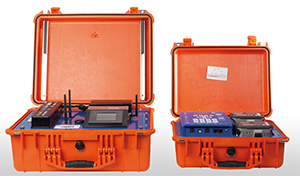We get many inquiries weekly on what it takes to organize a race, and questions as to whether or not someone’s organization will be able to raise enough money to pay for their expenses, but also make enough money to support their cause. I always respond with, “first, we need to figure out the time of year that fits best, then the location and finally what will be the ‘spark’ that will make people want to participate and feel that they ‘can’t miss this event’?”
Race Location and Date
It can take at least 6 months, and sometimes up to a year, to set up an event in order for it to be successful. There are several things that go into the event to even get it started. Events need to have the right location for their cause and clientele, as well as the right time of year and the right reason (ie. for a certain cause, for fun, or for awareness). Locations sometimes need to be reserved as much as one year out from the event, or sometimes cannot be reserved until the beginning of the calendar year which can be as little as a few months before the event. This can make planning tricky if events are not able to confirm their date within the recommend timeline of planning an event.
Race Budget
 Once the date and location are confirmed, it is time to start thinking about the budget and what is absolutely necessary and what are the fun add-on’s. Park permit and police fees can vary greatly from city to city. Some municipalities charge very little or nothing and others charge thousands of dollars based on the number of participants, location and police needs. This can sometimes be the most expensive piece of the budget.
Once the date and location are confirmed, it is time to start thinking about the budget and what is absolutely necessary and what are the fun add-on’s. Park permit and police fees can vary greatly from city to city. Some municipalities charge very little or nothing and others charge thousands of dollars based on the number of participants, location and police needs. This can sometimes be the most expensive piece of the budget.
Other necessary expenses entail insurance, equipment rentals, printing of promotional materials, race numbers and signage, announcer services, race management and timing, and of course t-shirts (or the preferred item that will be given to each participant). Many groups do not have any idea about all of the expenses incurred when starting to plan an event. A good race management company will walk them through the items that are absolutely necessary, as well as the items that can be added if there is enough money in their budget. Many groups like to have volunteers provide as many services as possible and some groups would rather have vendors provide services or equipment.
Race Sponsorship
 Many expenses can be offset through sponsorship. Groups sometimes have connections to vendors that will donate money, services, equipment or products. Sponsorships are most successful when the group has a personal connection to a sponsor or really fits with the mission of the sponsor. It is very hard to solicit sponsorship from a random source. Many groups think they can solicit any company at any time, but it is wise to review the websites of potential sponsors and learn about the charities and groups they support. Most companies will list this on their website. Some sponsors may only look at student-related activities. Some may chose not to support disease or cause-related events. Others may have a totally different philosophy for their businesses. Many businesses start preparing their annual budgets in September so the fall is the best time to start reaching out to sponsors. Some sponsors are always looking for what they will get in return for their sponsorship. Many events offer signage at the event, logos and links on websites, logos on t-shirts as well as complimentary entries, VIP parties and on-site sponsor booths.
Many expenses can be offset through sponsorship. Groups sometimes have connections to vendors that will donate money, services, equipment or products. Sponsorships are most successful when the group has a personal connection to a sponsor or really fits with the mission of the sponsor. It is very hard to solicit sponsorship from a random source. Many groups think they can solicit any company at any time, but it is wise to review the websites of potential sponsors and learn about the charities and groups they support. Most companies will list this on their website. Some sponsors may only look at student-related activities. Some may chose not to support disease or cause-related events. Others may have a totally different philosophy for their businesses. Many businesses start preparing their annual budgets in September so the fall is the best time to start reaching out to sponsors. Some sponsors are always looking for what they will get in return for their sponsorship. Many events offer signage at the event, logos and links on websites, logos on t-shirts as well as complimentary entries, VIP parties and on-site sponsor booths.
Race Location as it Related to Sponsors
One thing to consider with the planning as it relates to sponsors is the location. Will this group be more conducive to a trail or street run? Will this group be better in a suburban or inner city setting? Would the charity be a good place to host the event? If at all possible, it is nice to have the event staged at the charity’s office or place of business. In most cases, this is not possible but if so, it is nice to make that connection with the event. If a nature group is looking for a location, it would best to host an event at a park/trail location. If an inner city group is looking to host an event, a logical location is somewhere within the city and probably not at a suburban park or rural location.
Race Distance as it Related to Sponsors
Another factor with location is the distance that the event will be. A cause-related event that will support cancer or other disease-related events should be a 5K or shorter so that the families and survivors can easily participate. These participants are usually only participating in 1 or 2 events a year and are usually not able to achieve longer distances. The 5K and 1-mile distances are most common with this audience. If a group is looking to have a more competitive event, they often look to a 10K or longer. These events also have a charity, but are usually causes such as civic, school or other non-cancer/disease related causes.
Marketing and Online Race Registration
 Once the location, sponsors, and venue have been secured, it is time to start thinking about marketing. Marketing events has changed dramatically in the past 5 years. Most events now have their own websites where all of the information can be found-event information and times, results, online registration links and other social media links. Events have gone from mostly paper-entry forms, magazine and newspaper ads, and direct mailings to now virtually all electronic marketing such as e-newsletters, web calendars, Facebook, Twitter and other forms of social media marketing. Many events currently only print a save-the-date postcard for distribution at running stores and possibly other races, but the trend is definitely moving away from this. Very few races produce an actual entry form that might typically only be available upon request. Virtually all registration is now online. Gone are the days of data entry that used to take race directors many hours to compile their databases.
Once the location, sponsors, and venue have been secured, it is time to start thinking about marketing. Marketing events has changed dramatically in the past 5 years. Most events now have their own websites where all of the information can be found-event information and times, results, online registration links and other social media links. Events have gone from mostly paper-entry forms, magazine and newspaper ads, and direct mailings to now virtually all electronic marketing such as e-newsletters, web calendars, Facebook, Twitter and other forms of social media marketing. Many events currently only print a save-the-date postcard for distribution at running stores and possibly other races, but the trend is definitely moving away from this. Very few races produce an actual entry form that might typically only be available upon request. Virtually all registration is now online. Gone are the days of data entry that used to take race directors many hours to compile their databases.
Race Timing
 Race timing has also become a very hot topic over the past 5+ years. There are various versions of timing and some races still prefer tag timing-which is the ‘old-fashioned’ way of timing where the race numbers are collected manually at a finish line, no chip is worn, and far less equipment is needed. Most timing systems offer a disposable chip (that does not need to be collected back from the participant), but there are still many races that use a reusable chip that does need to be collected back from the participants at the end of the event. Costs for these services can vary from system to system as well as the various areas of the United States.
Race timing has also become a very hot topic over the past 5+ years. There are various versions of timing and some races still prefer tag timing-which is the ‘old-fashioned’ way of timing where the race numbers are collected manually at a finish line, no chip is worn, and far less equipment is needed. Most timing systems offer a disposable chip (that does not need to be collected back from the participant), but there are still many races that use a reusable chip that does need to be collected back from the participants at the end of the event. Costs for these services can vary from system to system as well as the various areas of the United States.
Race Timing as it Relates to Online Registration
ChronoTrack is one of the few timing systems that offers the registration interface with the timing system, so electronic registration is available on the race site and the online registration never shuts down until the start of the race. This is very beneficial to the event so that there is no downtime with registration. With other systems, the online registration normally is closed for 1-2 days prior to the race so that the timing companies/race directors can have enough time to prepare the race numbers/packets. With ChronoTrack, there is no need to prep or label any numbers or packets and numbers are assigned dynamically on site. This is a huge benefit to the race director/timing company during race week when there are many other things they need to be dealing with.
After all of these things are set, it is time to have the event! This can be the most fun as well as the most stressful part of the process. With good strong people working on the event as either volunteers or paid personnel, this can make the event more stress-free than stressful, making the day the celebration that it should be!
To learn more about Anderson Race Management, click here.
Mary was a contributing writer to our guide on how to plan a 5K race that you can download here.
To learn more about ChronoTrack’s race management tools, click here.

